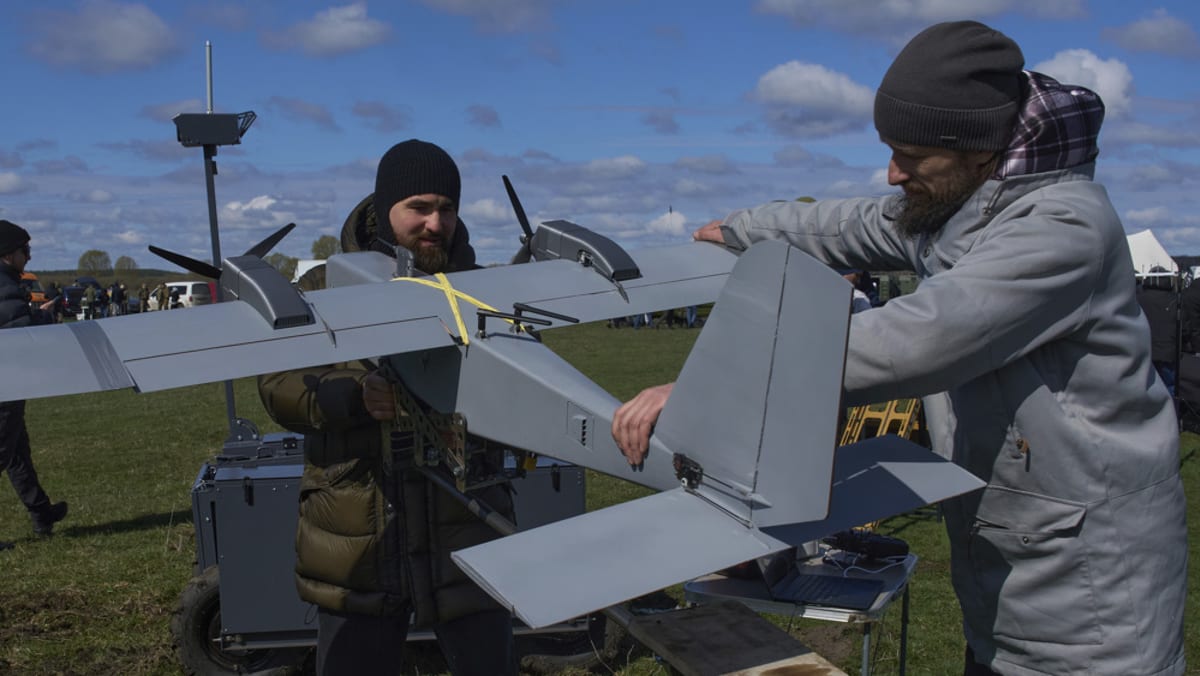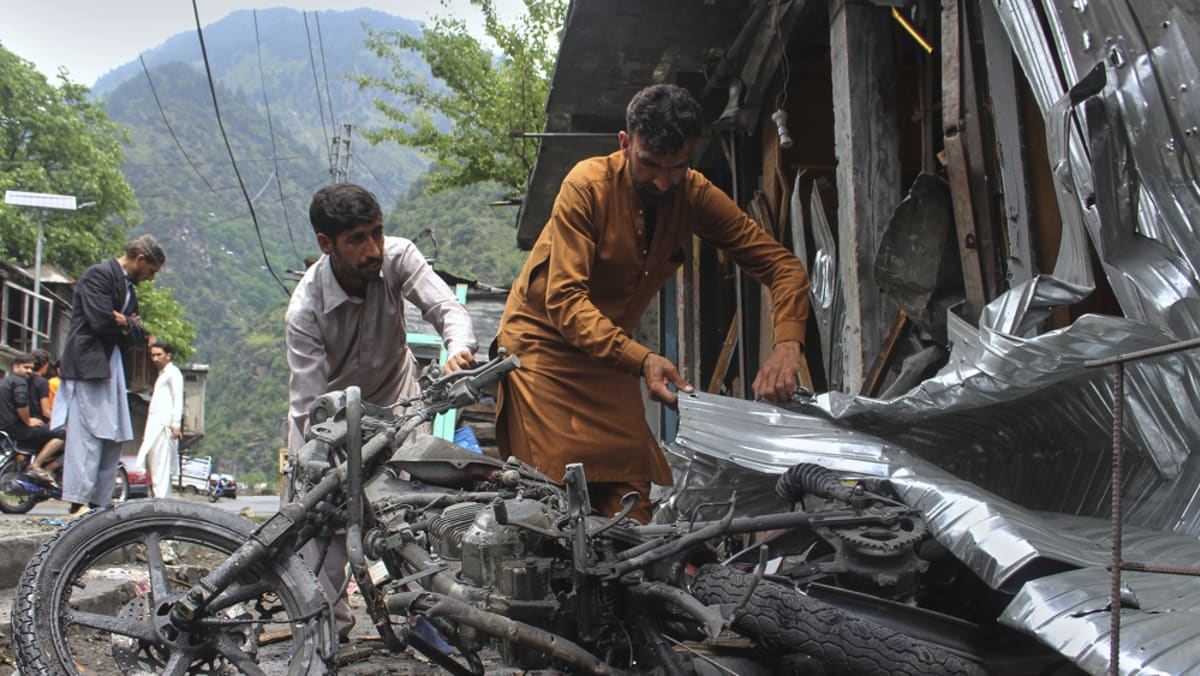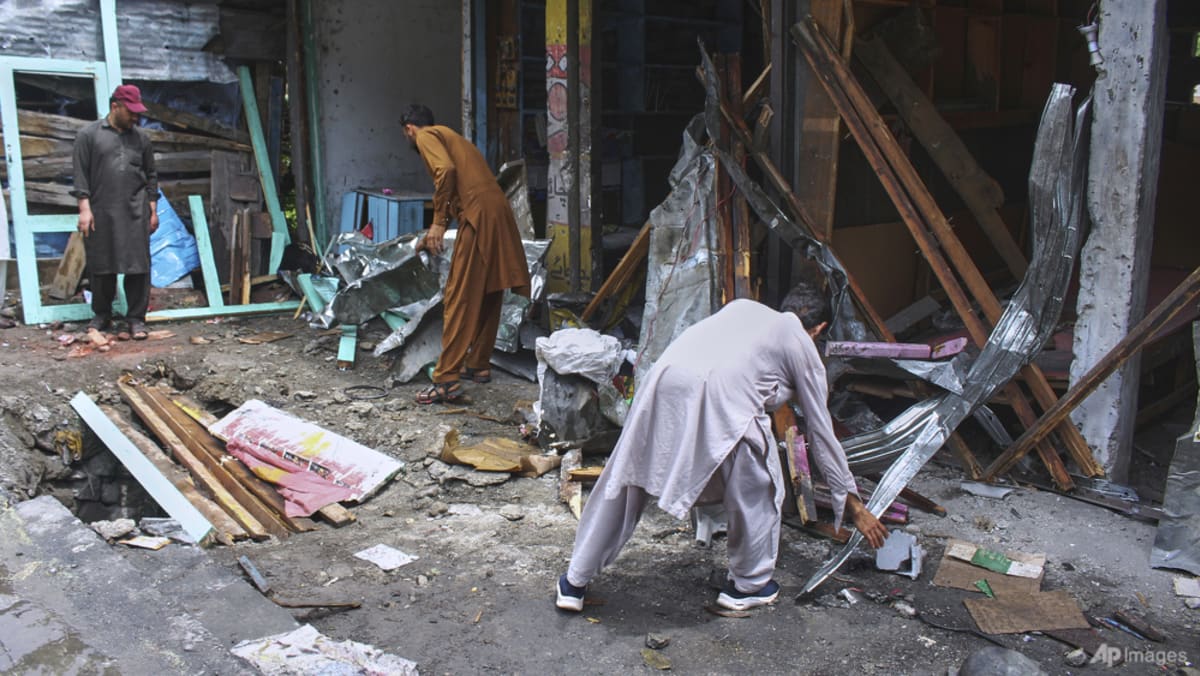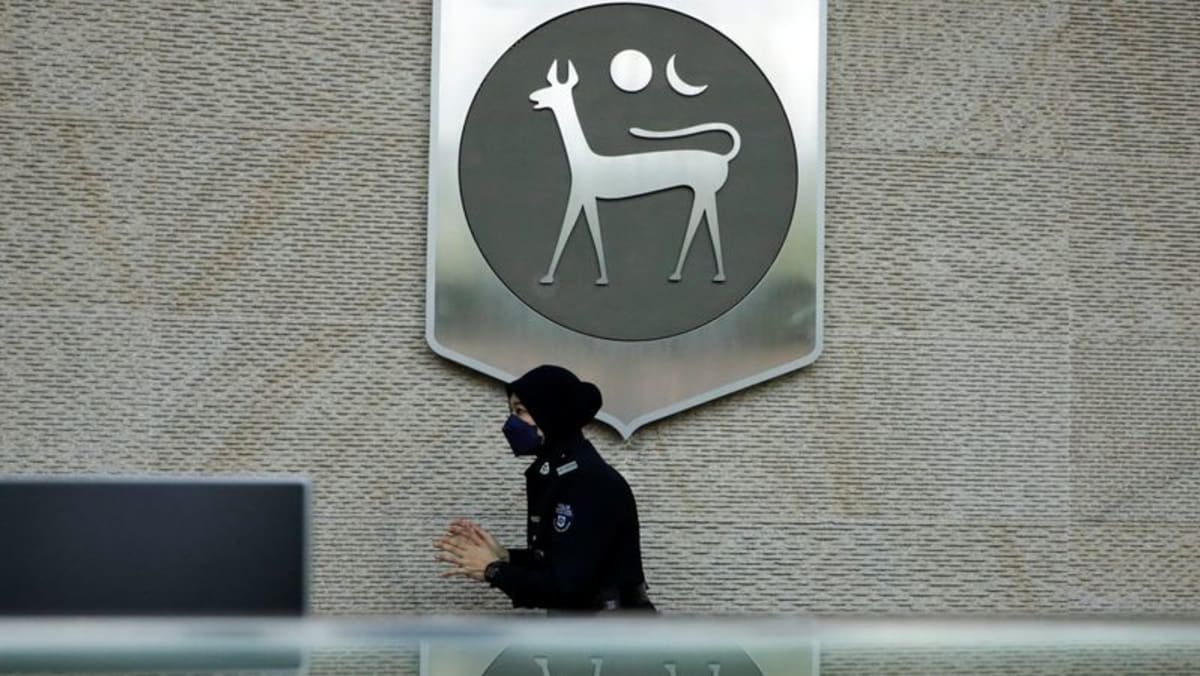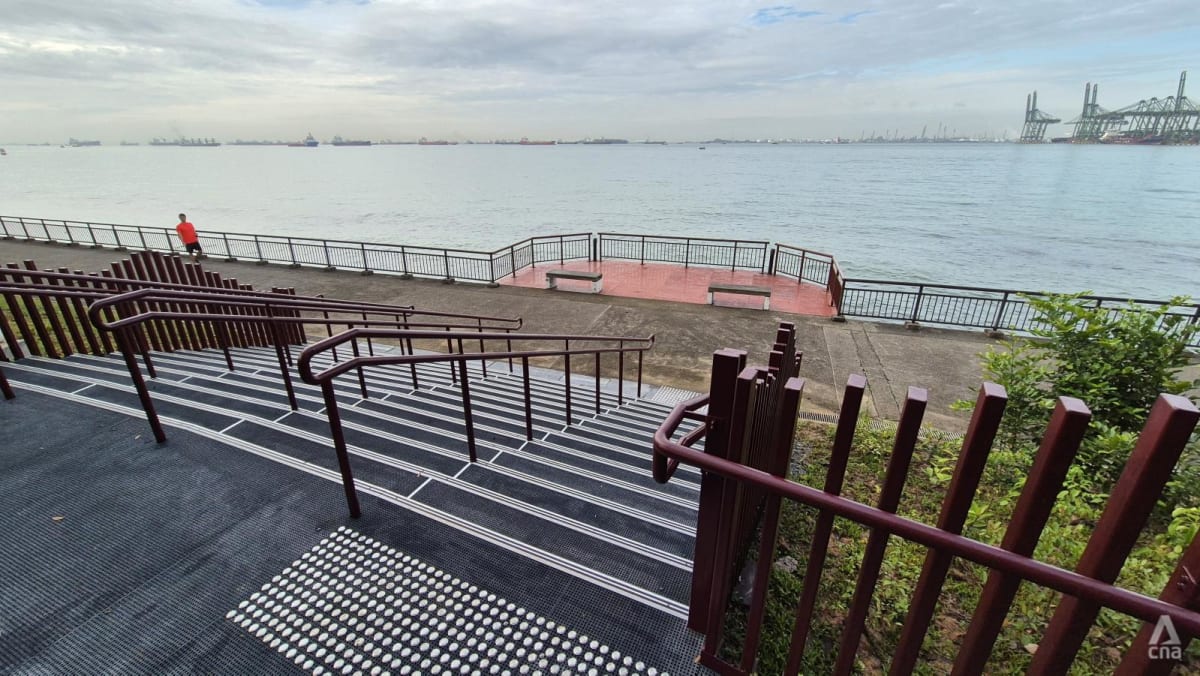At the national level, there has been a concerted effort to promote China’s ice and snow economy and develop it into a new growth sector.
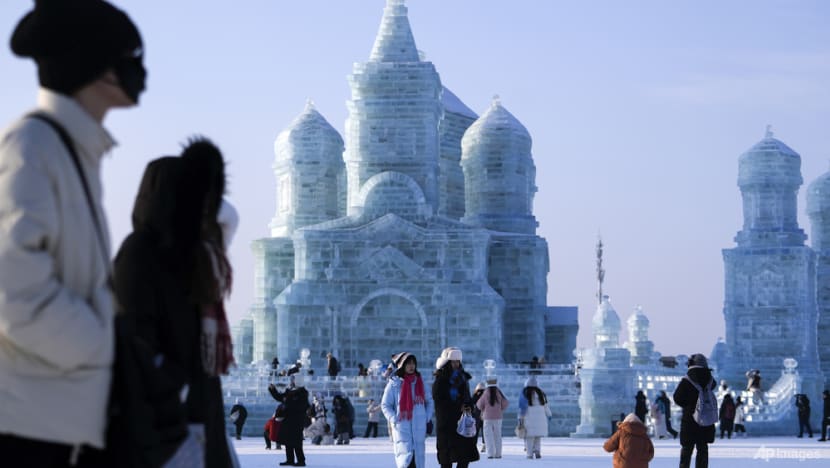
Visitors walk by ice structures during the Harbin Ice and Snow World in Harbin, China's Heilongjiang province, Jan 6, 2025. (Photo: AP/Andy Wong)
New: You can now listen to articles.

This audio is generated by an AI tool.
HARBIN, Heilongjiang: The icy city of Harbin is the most well-known destination in China for those longing for a wintery adventure.
The capital of China’s northernmost province of Heilongjiang is home to the largest ice and snow festival in the world, featuring elaborate ice sculptures scattered across the city, and a myriad of winter activities.
During the Spring Festival last year, about 10 million visitors thronged the region, marking an over 80 per cent increase from the year before.
This year, travellers have continued to head up north to experience the winter wonderland, where freezing temperatures can drop to below minus 30 degrees Celsius.
“I want to experience just how cold Harbin's winter can get and challenge myself a bit,” said one tourist from Tianjin city.
The festival used to attract a largely domestic crowd but today, it is also popular with foreign tourists, especially after the introduction of China’s mutual visa-free policies with a long list of countries that includes Japan, South Korea and Singapore.
“We’ve been to Shanghai and Beijing, bigger cities in China, so it’s the usual – factories and skyscrapers. Here (in Harbin), I would say it’s quite unique and different (from) the rest,” said one visitor from Singapore.
Last month, officials also extended Harbin’s visa-free transit policy to 144 hours, up from 72.
PROMOTING WINTER TOURISM
At the national level, there has been a concerted effort to promote the ice and snow economy and develop it into a new growth sector.
Chinese President Xi Jinping once said: “Lucid waters and lush mountains are invaluable assets. And so are ice and snow.”
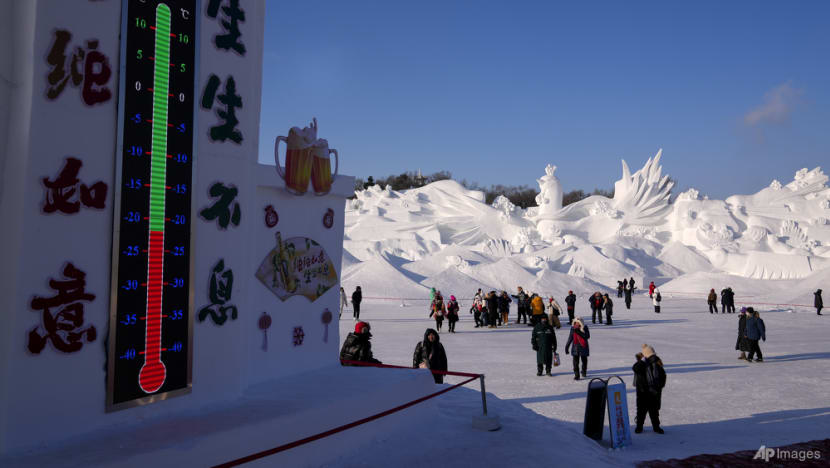 Visitors at a giant snow sculpture near a thermometer on display at the Sun Island Park during the Harbin Ice and Snow World in Heilongjiang, China Jan 8, 2025. (Photo: AP/Andy Wong)
Visitors at a giant snow sculpture near a thermometer on display at the Sun Island Park during the Harbin Ice and Snow World in Heilongjiang, China Jan 8, 2025. (Photo: AP/Andy Wong)
The winter economy is expected to break records and rake in more than 630 billion yuan (US$87 billion) in revenue this year alone. By 2030, authorities expect the size of the industry to reach 1.5 trillion yuan.
“This winter, not only northern regions like Northeast China, Inner Mongolia, and Xinjiang experienced booming snow and ice consumption,” said Xiao Weiming, vice secretary-general of China’s National Development and Reform Commission.
“Indoor ski resorts in cities like Shanghai, Hubei, and Sichuan have also been gaining popularity. We will continue to improve the number of ice and snow venues and public service levels to boost consumption in this area.”
But with China battling external and internal economic headwinds, concerns are mounting that the expected boom could melt away even before it takes shape.
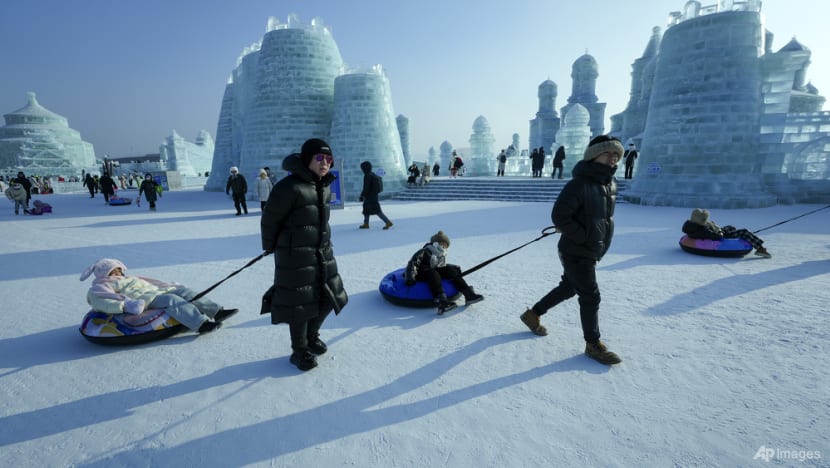 People pull their children on inflatable tubes as they visit the Harbin Ice and Snow World in Harbin, Heilongjiang province, China Jan 6, 2025. (Photo: AP/Andy Wong)
People pull their children on inflatable tubes as they visit the Harbin Ice and Snow World in Harbin, Heilongjiang province, China Jan 6, 2025. (Photo: AP/Andy Wong)
Harbin locals told CNA that the influx of tourists has slowed significantly this year after the rush of revenge travel following the lifting of COVID-19 restrictions.
“We noticed a decline in the number of tour groups – by about 40 per cent,” said tour guide Gu Xiaoli.
“In previous years, around this time, all tables in the restaurants would be full, and there would be a line. But this year, it’s a bit more relaxed.”
She said reasons for the drop in tourism could be consumers being spooked by a sluggish economy and visitors deterred by similar winter attractions every year.
CLIMATE CHANGE
On the horizon, a bigger challenge looms – climate change.
Harbin’s festival usually runs between December and March but its lifespan is largely determined by the weather.
Already, the city is feeling the heat. Last year, a warmer autumn delayed freezing temperatures, affecting those working on ice sculptures.
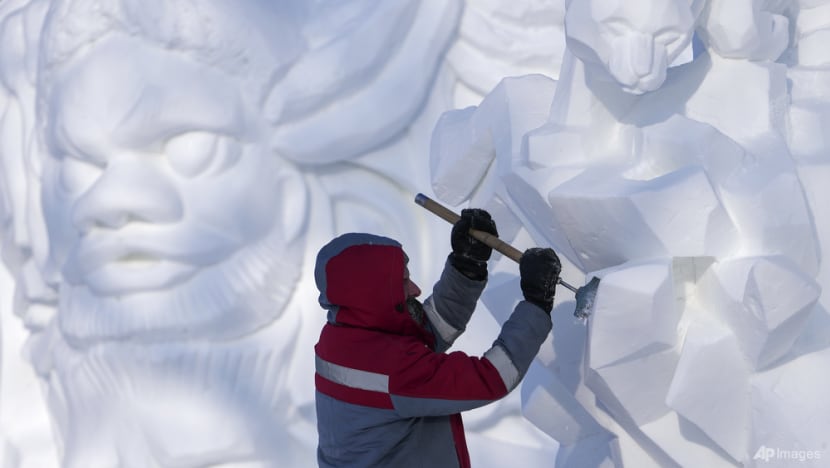 An artist works on a snow sculpture during the Harbin International Snow Sculpture Contest at the Harbin Ice and Snow World in Harbin, China's Heilongjiang province Jan 8, 2025. (Photo: AP/Andy Wong)
An artist works on a snow sculpture during the Harbin International Snow Sculpture Contest at the Harbin Ice and Snow World in Harbin, China's Heilongjiang province Jan 8, 2025. (Photo: AP/Andy Wong)
Snack vendors selling Harbin's famous frozen pears are also concerned.
“I am really scared – scared that by the time this winter ends, it will have already warmed up. If that happens, our fruits will melt, and once they melt, it will definitely have an impact on sales,” said street vendor Shang Liang.
Still, analysts are positive climate challenges could also lead to new opportunities and solutions as businesses are forced to be creative.
“In terms of climate sustainability, that has always been a part of the question for the winter sports, and with the economy,” said Heron Lim, an economist from financial services firm Moody’s.
“The flip side of it is how these areas potentially could incentivise the breakthroughs and innovations in the more renewable aspects of things. And I think China is able to develop this type of ecotourism as well for the winter economy.”
The next major event to be held in Harbin is the 9th Asian Winter Games next month.
Local media reports have predicted that foreign traveller numbers are expected to increase by around 20 per cent.





